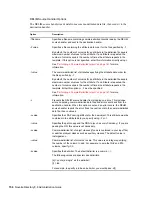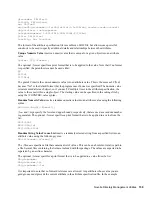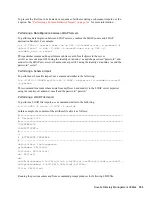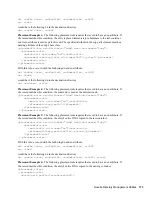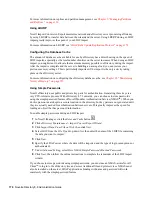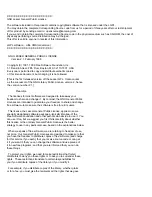
166
Novell eDirectory 8.8 Administration Guide
no
vd
ocx
(e
n)
6 Ap
ril 20
07
ice -S LDIF -f server1.ldif -e des -E secret -D LDAP -s
server2.acme.com -p 636 -L cert-server2.der -d cn=admin,c=us -w
password
6.1.3 Conversion Rules
The Novell Import Conversion Export engine lets you specify a set of rules that describe processing
actions to be taken on each record received from the source handler and before the record is sent on
to the destination handler. These rules are specified in XML (either in the form of an XML file or
XML data stored in the directory) and solve the following problems when importing entries from
one LDAP directory to another:
Missing information
Hierarchical differences
Schema differences
There are three types of conversion rules:
You can enable conversion rules in both the Novell eDirectory Import/Export Wizard and the
command line interface. For more information on XML rules, see
“Using XML Rules” on page 167
.
Rule
Description
Placement
Changes the placement of an entry.
For example, if you are importing a group of users in the l=San Francisco, c=US
container but you want them to be in the l=Los Angeles, c=US container when
the import is complete, you could use a placement rule to do this.
For information on the format of these rules, see
“Placement Rules” on
page 171
.
Creation
Supplies missing information that might be needed to allow an entry to be
created successfully on import.
For example, assume that you have exported LDIF data from a server whose
schema requires only the cn (commonName) attribute for user entries, but the
server that you are importing the LDIF data to requires both the cn and sn
(surname) attributes. You could use the creation rule to supply a default sn
value, (such as " ") for each entry as it is processed by the engine. When the
entry is sent to the destination server, it will have the required sn attribute and
can be added successfully.
For information on the format of these rules, see
“Create Rules” on page 169
.
Schema Mapping
If, when you are transferring data between servers (either directly or using
LDIF), there are schema differences in the servers, you can use Schema
Mapping to
Extend the schema on the destination server to accommodate the object
classes and attribute types in entries coming from the source server.
Map a schema element on the source server to a different but equivalent
schema element on the destination server.
For information on the format of these rules, see
“Schema Mapping Rules” on
page 167
.
Summary of Contents for EDIRECTORY 8.8 SP2
Page 4: ...novdocx en 6 April 2007...
Page 116: ...116 Novell eDirectory 8 8 Administration Guide novdocx en 6 April 2007...
Page 128: ...128 Novell eDirectory 8 8 Administration Guide novdocx en 6 April 2007...
Page 255: ...256 Novell eDirectory 8 8 Administration Guide novdocx en 6 April 2007...
Page 406: ...408 Novell eDirectory 8 8 Administration Guide novdocx en 6 April 2007...
Page 563: ...566 Novell eDirectory 8 8 Administration Guide novdocx en 6 April 2007...
Page 573: ...576 Novell eDirectory 8 8 Administration Guide novdocx en 6 April 2007...
Page 601: ...604 Novell eDirectory 8 8 Administration Guide novdocx en 6 April 2007...





